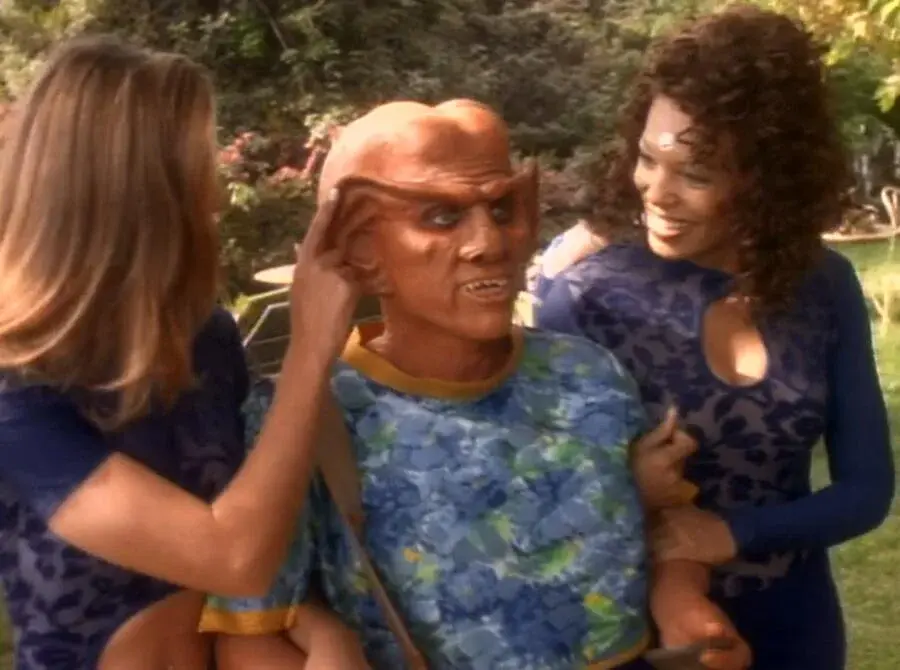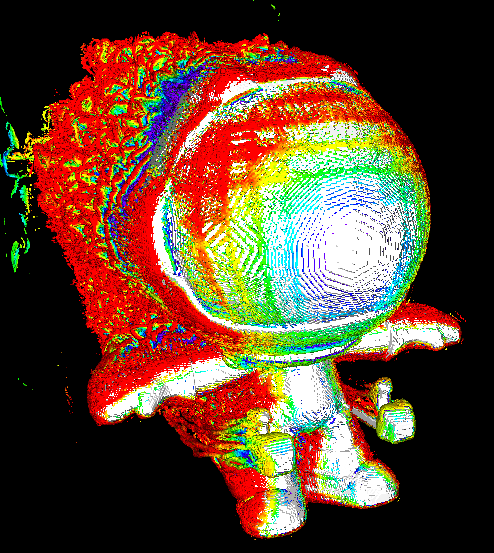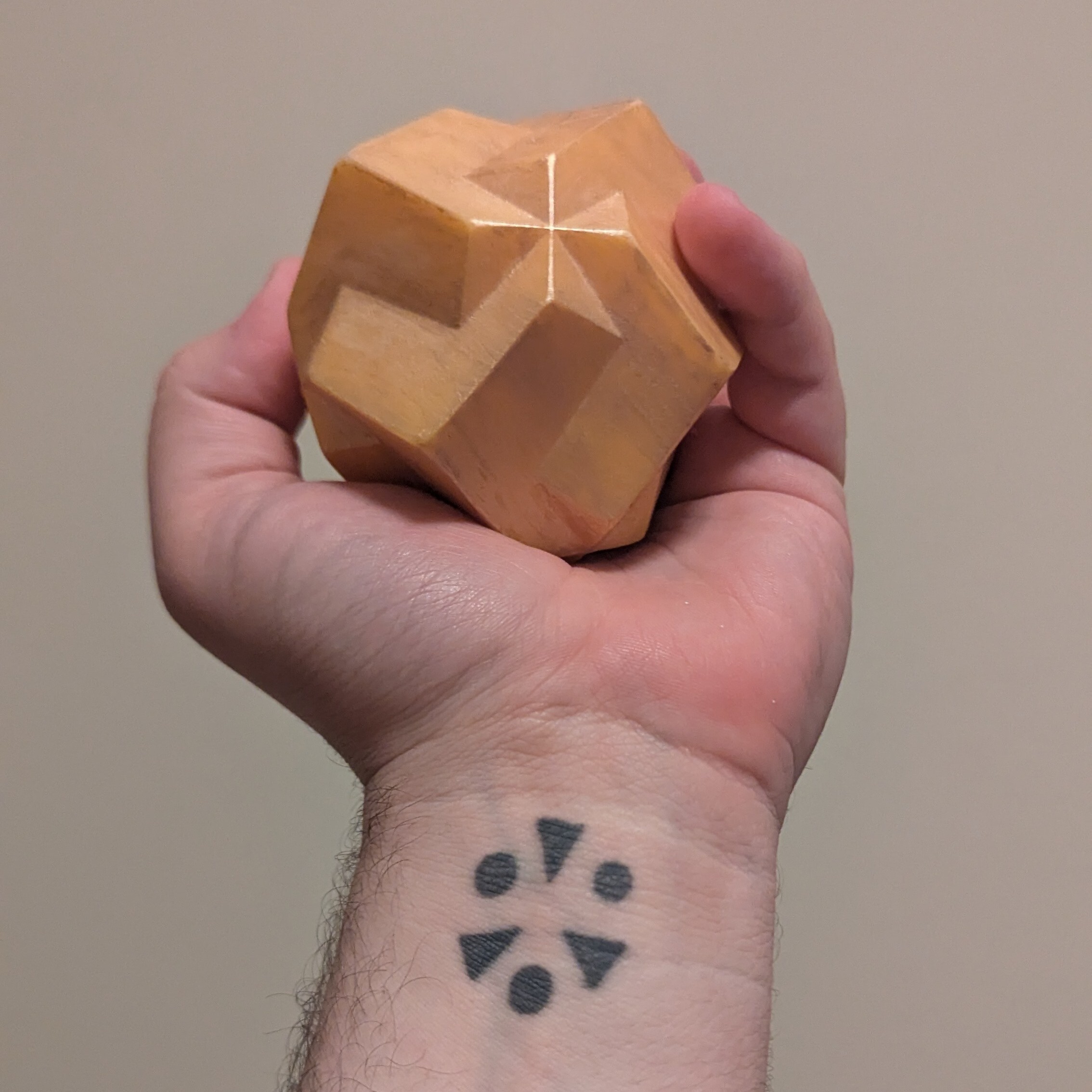We’ve gotten so good at faking most lighting effects that honestly RTX isn’t a huge win except in certain types of scenes.
The difference is pretty big when there are lots of reflective surfaces, and especially when light sources move (prebaked shadows rarely do, and even when, it’s hardly realistic).
A big thing is that developers use less effort and the end result looks better. That’s progress. You could argue it’s kind of like when web developers finally were able to stop supporting IE9 - it wasn’t big for end users, but holy hell did the job get more enjoyable, faster and also cheaper.
Cyberpunk and Control are both great examples - both games are full of reflective surfaces and it shows. Getting a glimpse of my own reflection in a dark office is awesome, as is tracking enemy positions from cover using such reflections.
I have only ever seen Cyberpunk in 2k res, ultra graphics, ultra widescreen, ray-tracing and good fps at a friend’s house and it does indeed look nice. But in my opinion there are too many reflective surfaces. It’s like they are overdoing the reflectiveness on every object just because they can. They could have done a better job at making it look realistic.
For any other game, I’d agree, but cyberpunk being full of chrome is an aesthetic that predates the video games by a fair margin, haha.
My problem is more with wet surfaces and the likes. Walking around the city it feels like every little water puddle is mirror and a spoon can also reflect way too much. I don’t mind shining chrome body parts.
Oh, they are definitely intentionally overdoing it since 90% of said reflective surfaces are ads, often reflecting other ads in there. The game is such an assault of advertising that I’ve found myself minding the advertisements in RL public spaces a lot
moreless.
But, it takes a lot of work by designers to get the fake lighting to look natural. Raytracing would help avoid that toil if the game is forced RT.
deleted by creator
The issues come if you know how they’re faking them. Sure, SSR can look good sometimes, but if you know what it is it becomes really obvious. Meanwhile raytraced reflections can look great always, with the cost of performance usually. It’s sometimes worth it, especially when done intelligently.
Not true. Screen space reflections consistently fails to produce accurate reflections.
Screenspace isn’t the only way to draw reflections without RT. It’s simply the fastest one.
Most gamers aren’t going to notice, and I can count on one hand the number of games that actually used reflections for anything gameplay related.
What I’m talking about is drawing accurate reflections and I don’t know any other technique that produces the same accuracy as RT
Depends on how you define “accurate”. Even full ray tracing is just an approximation based on relatively few light rays (on an order of magnitude that doesn’t even begin to approach reality) that is deemed to be close enough where increasing the simulation complexity doesn’t meaningfully improve visual fidelity, interpolated and passed through a denoising algorithm. You can do close enough with a clever application of light probes, screenspace effects, or using a second camera to render the scene onto a surface (at an appropriate resolution).
That’s true, but after a few frames RT (especially with nvidia’s ray reconstruction) will usually converge to ‘visually indistinguishable from reference’ while light probes and such will really never converge. I think that’s a pretty significant difference.
Reflection probes are one way. Basically a camera drawing a simpler version of the scene from a point into a cubemap. Decent for oddly shaped objects, although if you want a lot of them then you’d bake them and lose any real time changes. A common optimisation is to update them less than once a frame.
If you have one big flat plane like the sea, you can draw the world from underneath and just use that. GTA V does that (like ten years ago without RT), along with the mirrors inside. You could make that look better by rendering them in higher resolution.
https://www.adriancourreges.com/blog/2015/11/02/gta-v-graphics-study-part-2/
Where RT is visibly better is with large odd shaped objects, or enormous amounts of them. I can’t say it’s worth the framerate hit if it takes you below 60fps though.
I haven’t personally played a game that uses more than one dynamic reflection probe at a time. They are pretty expensive, especially if you want them to look high resolution and want the shading in them to look accurate.
There are cases where screen space can resolve a scene perfectly. Rare cases. That also happen to break down if the user can interact with the scene in any way.
Maximise your RTX performance with this one crazy hack!
Ray traced reflections: on
Ray traced everything else: offI’d argue reflections are nowhere near as nice looking as RTGI. If anything, switch reflections off.
But muh puddles! Night City is nothing without those gorgeous, mirror–like puddles.
Baked lighting looks almost as good as ray tracing because, for games that use baked lighting, devs intentionally avoid scenes where it would look bad.
Half the stuff in this trailer (the dynamically lit animated hands, the beautiful lighting on the moving enemies) would be impossible without ray tracing. Or at the least it would look way way worse:
Practically impossible for this developer? Maybe. Technically impossible? No.
We do have realtime GI solutions which don’t require raytracing (voxel cone tracing, sdfgi, screenspace, etc). None of which require any ‘special’ hardware.
Raytracing is just simpler and doesn’t need as much manual work to handle cases where traditional rasterisation might fail (eg; light leaking). But there’s not many things it can do which we can’t already achieve with rasterisation tricks.
Raytracing is mostly useful for developers who don’t have the time/budget/skillset to get the same visual quality with traditional rasterisation.However, in an industry which seems to prioritise getting things released as cheaply and quickly as possible, we’re starting to see developers rely heavily on raytracing, and not allocating many resources into making their non-rt pipeline look nice.
Some are even starting to release games which require raytracing to work at all, because they completely cut the non-rt pipeline out of their budget.So I’d argue that you’re incorrect in theory, but very correct in practise (and getting even more correct with time).
That’s kinda the thing with ray tracing. You can save a lot of work but since you want your game available for gamers that don’t have the hardware you still have to do that work…
I’m expecting the next PlayStation to focus on ray tracing to set it apart in the market. They have the volume and it would be good for their exclusive titles.
Edit: Okey, maybe I’m just hoping, rather than expecting. Sony can absolutely screw this up.
It’s not a trick, it’s just lighting done the way it should be done without all the tricks we need now like Subsurface scattering or Screen space reflections.
The added benefit is that materials reflect more of their natural reflection making all the materials look more true to life.
Its main drawback is that it’s GPU costly, but more and more AAA games are now moving toward RT as standard by being more clever in how it handles its calculations.
Yes, I’m sure every player spends the majority of their game time admiring the realistic material properties of Spider-Man’s suit. So far I’ve never seen a game that was made better by forcing RT into it. A little prettier if you really focus on the details where it works, but overall it’s a costly (in terms of power, computation, and price) gimmick.
The one benefit I see is that it simplifies lighting for the developer by a whole lot.
Which isn’t a benefit at all, because as of now, they basically have to have a non-raytrace version so 90% of players can play the game
But in a decade, maybe, raytracing will make sense as the default
I’ve always said that, because the baseline GPUs are the RTX 3060 and the RX 6700 (consoles equivalent)… And those GPUs aren’t doing amazing RT so, what’s the point in pushing it so hard NOW for the 1% of users with a 4090 or whatever?
Hell, I got a RX 7900 XTX and for some games, my fps are not consistently at 60 fps
RT also makes level-design simpler for the development team as they can design levels by what-you-see-is-what-you-get method rather than having to bake the light sources.
Development and design can use RT all day long, that’s not the issue. They have the benefit of not having to run ray tracing in real time on consumer hardware. At the end of the day, unless they want to offload all of that computation load onto the customer forever (and I really mean all RT all the time), they’ll eventually have to bake most or all of that information into a format that a rasterizer can use.
Subsurface scattering is not one of the things you get automatically with ray tracing. If you just bounce the rays off objects as would be the usual first step in implementing ray tracing you don’t get any light penetration into the object, so none of that depth.
Maybe you meant ambient occlusion?
raytracing still needs to do subsurface scattering. It can actually do it for real though. It also “wastes” a lot of bounces, so is usually approximated anyway
Even with raytracing there is still a lot of shortcuts and trickery under the hood. Ray tracing is the “cheating” form of path tracing.
Raytracing is cool, personaly I feel like the state that consumers first got it in was atrocious, but it is cool. What I worry about is the ai upscale, fake frame bullshit. While it’s cool that the technology exists; like sweet, my GPU can render this game at a lower resolution, then upscale it back at a far better frame rate than without upscaling, ideally stretching out my GPU purchase. But I feel like games (in the AAA scene at least) are so unoptimized now, you NEED all of these upscaling, fake frame tricks. I’m not a Dev, I don’t know shit about making games, just my 2 cents.
Raytracing will be cool if hardware can catch it up. It’s pretty pointless if you have to play upscaled to turn the graphics up. And as you say, upscaling has its uses and is great tech, but when a game needs it to not look like dogshit (looking at you Stalker 2) it worries me a lot.
I feel like if you have the level of a 3070 or above at 1080p, pathtracing, even with the upscaling you need, can be an option. At least based on my experience with portal rtx.
Personally I have a 3060, but (in the one other game I actually have played on it with raytracing support) I still turned on raytraced shadows in Halo Infinite because I couldn’t really notice a difference in responsiveness. There definitely was one (I have a 144hz monitor) but I just couldn’t notice it.
No you’ve pretty much hit it on the head there. The higher ups want it shipped yesterday, if you can ship it without fixing those performance issues they’re likely going to make you do that.
The joke is, LCD smear anyway on low framerates.
Optimization is usually possible, but it is easier said than done. Often sacrifices have to be made, but maybe it is still a better value per frame time. Sometimes there’s more that can be done, sometimes it really is just that hard to light and render that scene.
It’s hard to make any sweeping statements, but I will say that none of that potential optimization is going to happen without actually hiring graphics devs. Which costs money. And you know what corporations like to do when anything they don’t consider important costs money. So that’s probably a factor a lot of the time.
Soooo, there’s a missing part here. The point (and drive) behind raytracing isn’t making games beautiful, it’s making them cheaper and less man-hour intensive to make/maintain.
The engine guys spend manyears every year working on that non-raytraced engine so it can do 150. They’ve done every cheat, every side step, and spent every minute possible making it look like they haven’t done anything at all.
The idea is that they stop making/updating/supporting non-raytracing engines and let the GPU’s pick up the slack. Then using AI to artificially ‘upgrade’ the frame rate with interpolation.
It’s not just a time limitation either tho, it also opens up a lot of room for artistic direction and game design
I don’t think you could possibly make something like Control’s shiny black blocks world look decent without raytraced reflections.
Also anything with significantly large dynamic geometry usually either needs like half of the level file size to be duplicated for every possible state, or some form of raytracing, to work at all. (There’s also things like voxel cone tracing that do their own optimized tracing but they also don’t really work in 100% of situations and come with their own visual downsides)
To see how far rasterization has been stretched, and how that holds back development - Path of Exile 2 has a tech talk about their bare minimum settings. Artists weren’t allowed to rely on anything that could be turned off. They begged the programmers for specific gimmicks, and turned that cheap nonsense into a million blades of grass, raymarched cracks in translucent ice, and soft shadows with no Peter Panning.
Or, picking one specific trick: ambient occlusion was half of why Crysis humbled $5,000 PCs. There’s a slide deck for how a superior version of the same effect was achieved in Toy Story 3 on the Wii.
Real-time raytracing was unobtanium for decades because we kept moving the goalposts. The entire 3D games industry is built on cheating around simple parallel techniques being too expensive. By the time hardware catches up to where doing something the simple way is feasible, complex software has faked a wild variety of other effects. Meanwhile: games are designed to rely on what’s available. All of the tells for proper path-traced lighting have either been faked or avoided. Games don’t even do mirrors, anymore.
There’s a reason RTX shows off games from the late 1900s.
It’s like when the unity game engine came out, somehow IMO, instead of having to program the whole thing up to your specific game, now everyone could make a 3D platformer.
It does, again IMO, take the soul out of games.
Heh, I can appreciate that. That was also said when people stop using ASM and again when games started running in Windows. Not running games in dos felt really icky.
True, even if there weren’t that windows border, you just knew windows were lurking behind the game somewhere in the shadows…
I think it was 98 when I finally had a computer powerful enough to play quake and burn a cd at the same time. Dual processor, SCSI disk, quarter gig of ram.
I had like a 1GB hard drive … I was poor.
The earliest publicly available engines were id software engines. Whenever id developed a new one, they released the old one for free. That’s why we got a lot of doom clones and those doom clones became whole new genres of games. Thief, half-life, counterstrike, duke nukem, serious Sam, Wolfenstein, call of duty and many many many more games are direct descendants of developers playing with open source engines.
If your argument is that games are worse because developers don’t need to build their own engines anymore, you are dead wrong.
Lol you just explained it yourself.
We won’t go back in time to change things, and it was obvious what was going to happen, and it’s not always wrong either, but you can’t just brush away that everyone and their grandmother had to make a 3D platformer when unity came out.
Good or bad, it generally led people astray IMO.
There were lots of engines out there back in the day, the ID one was just the most polished (by far), you still had to know what you were doing, not so much with Unity.
The first F.E.A.R. had excellent dynamic lighting, I’d argue it had the epitome of relevant dynamic lighting. It didn’t need to set your GPU on fire for it, it didn’t have to sacrifice two thirds of its framerate for it, it had it all figured out. It did need work on textures, but even those looked at least believable due to the lighting system. We really didn’t need more than that.
RT is nothing but eye candy and a pointless resource hog meant to sell us GPUs with redundant compute capacities, which don’t even guarantee that the game’ll run any better! And it’s not just RT, it’s 4k textures, it’s upscaling, it’s Ambient Occlusion, all of these things hog resources without any major visual improvement.
Upgraded from a 3060 to a 4080 Super to play STALKER 2 at more than 25 frames per second. Got the GPU, same basic settings, increased the resolution a bit, +10 FPS… Totes worth the money…
Edit: not blaming GSC for it, they’re just victims of the AAA disease.
Edit 2: to be clear, my CPU’s an i7, so I doubt it had much to do with the STALKER bottleneck, considering it barely reached 60% usage, while my GPU was panting…
Edit 3: while re-reading this, it hit me that I sound like the Luddite Boss, so I need to clarify this for myself more than anyone else: I am not against technological advancement, I want tech in my eyeballs (literally), I am against “advancements” which exist solely as marketing accolades.
I remeber reading the real sell to developers is less calculations, currently textures have to be designed for different lightening, which would require pre rendering same textures across multiple lightings. And that is time and resource intensive for developers.
Ray tracing is a simpler solution. I’m not an expert, but that seemed sensible to me.
Honestly, this wouldn’t have been an issue, ever, if we wouldn’t have switched to “release fast, fuck quality, crunch ya’ plebs!” It’s yet another solution for a self-generated problem.
I don’t know who is downvoting you, but release fast at cost of quality definitely makes the problem worse. Because people keep buying half baked unfinished games.
Oh, I always remove the default upvote:))
And thoroughly agreed, currently playing Dune Awakening. It’s been about two weeks since launch. I fell through the map twice (by doing nothing other than using what the game gave me - grappling-hooked to a container in a lab, catapulted me straight through the wall), and keep getting ganked by solo mobs who pin me to walls, because I’m unable to move or dodge. A single enemy. Blocking my movement completely. Not to mention NPCs being displayed as blank templates which load in when you’re barely 2m away from them, twitchy directionals, and many other points of minor annoyance, which just add up…
And I’m not dumping on Dune, it’s a good game! But it’s VERY rough around the edges…
I heard the Source 2 editor has (relatively offline, think blender viewport style) ray tracing as an option, even though no games with it support any sort of real time RT. Just so artists can estimate what the light bake will look like without actually having to wait for it.
So what people are talking about there is lightmaps, essentially a whole other texture on top of everything else that holds diffuse lighting information. It’s ‘baked’ in a lengthy process of ray tracing that can take seconds to hours to days depending on how fast the baking system is and how hard the level is to light. This just puts that raytraced lighting information directly into a texture so it can be read in fractions of a millisecond like any other texture. It’s great for performance, but can’t be quickly previewed, can’t show the influence of moving objects, and technically can’t be applied to any surface with a roughness other than full (so most diffuse objects but basically no metallic objects, those use light probes and bent normals usually, and sometimes take lightmap information although that isn’t technically correct and can produce weird results in some cases)
The solution to lighting dynamic objects in a scene with lightmaps is through a grid of pre baked light probes. These give lighting to dynamic objects but don’t receive it from them.
F. E. A. R. And Riddick EFBB were beautiful games, I remember GTA SA coming out a few months later and thinking, WTF are these graphics.
Seriously, even GTA III had a MUCH better defined atmosphere and feel than SA!
And the Riddick games were, indeed, gorgeous! In a grim as hell way, but gorgeous!
It was fun though, despite the shitty GFX, was definitely my favourite of the series.
Agreed, it was a major step forward in terms of mechanical complexity, but I couldn’t shake the feeling that everything I saw was made out of plastic, y’know? Cars included.
To be fair, the “sunny California” setting and atmosphere is probably as bland and generic as it gets. It didn’t give designers a lot to work with.
It’s not just that, Vice City was set in Miami, I’d argue it had similar vibes/aesthetics (accounting for the difference in time and setting), and it felt significantly more cohesive and well-designed in terms of aesthetics.
Really? Ambient occlusion used to be the first thing I would turn on. Anyways, 4k textures barely add any cost to the GPU. That’s because they don’t use any compute, just vram, and vram is very cheap ($3.36/GB of GDDR6). The only reason consumer cards are limited in vram is to prevent them from being used for professional and AI applications. If they had a comparable ratio of vram to compute, they would be an insanely better value compared to workstation cards, and manufacturers don’t want to draw away sales from that very profitable market.
Honestly, I find 4k in general to be entirely unnecessary. Anything above 1440p is redundant imho, as diminishing returns kick in very fast as the density increases.
For the resolution of the texture to need to be doubled along each axis, you could either have a monitor with twice the resolution, or you could be half the distance away. Most of the time games will let you get closer to objects than their texture resolution looks good for. So 4k textures still give an improvement even on a 1080p monitor.
Texture resolution is chosen on a case by case basis, objects that the player will usually be very close to have higher resolution textures, and ones that are impossible to approach can use lower resolution.
The only costs to including higher resolution textures are artist time and (usually) disk space. Artist time is outsourced to countries with cheap labor (Philippines, Indonesia, etc) and apparently no-one cares about disk space.
It is such a minor improvement, though. Especially, as you’ve mentioned, on a 1080p screen. And, sorry to say, but having to fill up 150+ Gigs of space for a 20-30 hour game is a complete waste with, as I’ve said several times, immensely diminished returns.
Let’s take UE5, for instance. Texture streaming has become necessary because we can’t afford to have a coherent texture map loaded in all at once, precisely because those textures are stupidly large. This causes so, so many performance issues, that I’d argue it’s been a downgrade even coming off UE3.
I’d rather have a smooth and OK-looking game which doesn’t require me to get a second SSD just to fit it all, than to face significant stutters every time I do a 180° turn because the engine is struggling to load Gigs of uncached textures, which, again, barely look any better.
Cpu % usage is not a great stat. If on a 10 core CPU the main thread is maxed and the others are on 20% it would read 28% overall but you’re still CPU limited.
Even the 7800x3d is cpu limited in stalker 2 in any npc area
Sorry, yeah, forgot the deets. 9700k, none of the cores were overworked, 60% seemed to be average usage across them.
And, yeah, checked in NPC-heavy areas, where the stuttering, lag, and frame times were the worst, and I didn’t have it set to “Ridiculous” - using a combination of High for textures and Med for effects (like shadows and lighting), running it at 1080p on the 3060 and 1440p on the 4080 Super (bumped it up to native, basically). Exclusively on SSD, 32 Gigs of RAM.
Edit: no upscaling because the input lag was horrid.
Still, even if any thread looks like it’s always at 60%, if a load appears and disappears very quickly and gets averaged out on the graph (as it could in an unoptimised or unusual situation) it could still be a factor. I think the only real way to know is to benchmark. You could try underclocking your CPU and see if the performance gets worse, if you really want to know.
Did several, the CPU is fine. Of course, it isn’t fine when a new game suffers from unpatched memory leaks and unoptimised respurce consumption, which has become the trend rather than the exception - looking at Cyberpunk 2077 for demonstrating to publishers that gamers will buy literally anything out of inertia.
I that’s part of it… The 9700K is like 7 years old at this point, and I’m all for holding off updates if it does what you want, but eventually you’ll have to if you want to actually take advantage of that 4080
Well aware of that, but no game has ever had issues with it so far, so…
And I even run it without any OC, because it handles everything I throw at it juust fine.
Edit: plus, to be honest… if things keep going the way they’re going, I can see a clear cut-off point for me around gaming… Very few new games I’d actually want to play, and I own every game I’ve ever enjoyed playing.
Edit 2: as an example, I can run Cyberpunk 2077 with everything cranked up to 11 and my system’s actually chillin’.
I think you’d be surprised at how much headroom a fast cpu will give you in some games on that resolution and with that gpu. I’ve got a similar performing one (7900xtx) and I swear by my 7800x3d. Every game (apart from stalker 2) just feels so responsive. But it’s no cheap upgrade thats for sure.
I don’t doubt that! My point was that a 9th-gen i7 is beef enough to handle literally everything I’ve ever thrown at it, games or otherwise, yet some newer games with very few graphical enhancements (I’m talking not even ray-tracing) are so poorly optimised, that the hardware isn’t to blame. UE5 in general, for instance, is a hot mess, not in terms of graphical fidelity, but in terms of software bulk and resource consumption. And it really doesn’t look THAT much better when compared to UE4.
I’d rather just stop buying half-baked software than be strong-armed into expensive and unnecessary upgrades to play a game which was clearly rushed to market and is oftentimes incomplete not just from a software perspective, but also from a narrative and feature perspective.
I never turn it on, the visual difference is too unimportant to warrant such a huge cost in hardware resources (and temperature). It looks different if you have side-by-side screenshots, or if you turn it off and on in-game, but the difference is several orders of magnitude too slight to be worth it. Higher frames-per-second is more important than realistically-simulated light beams. You can’t really have both in large AAA games.
I have seen FEW games that really benefit from RT. RT is a subtle effect because we’we got pretty good at baking and faking how light should look.
But even if its just a subtle effect, it adds so much, the feeling of the lighting is (for me) better wit RT, light properly propagates, bounces, dynamic geometry is properly lit. It’s just so much of these, on the bigger scale, tiny upgrades that make the lighting look a lot better.
It just sucks that the performance is utter shit right now. I hope in few years this will be optimised and we won’t need to sacrifice 1\2 of the framerate just to get lighting that feels right.
Early 3D graphic rendering was all ray-tracing, but when video games started doing textured surfaces the developers quickly realised they could just fake it with alpha as long as the light sources were static.
Unless you consider wireframe graphics. Idk when triangle rasterization first started being used, but it’s more conceptually similar to wireframe graphics the ray tracing. Also, I don’t really know what you mean by ‘fake it with alpha’.
The best examples of raytracing are in applying it to old games, like Quake II or Portal or Minecraft.
Newer games were already hitting diminishing returns on photo realism. Adding ray tracing takes them from 95% photo realistic to 96%.
I disagree - adding RT to games that weren’t designed for it often (but not always) wrecks the original art direction.
Quake II is a great example; I think the raytraced version looks like absolute ass. Sure, it has fancy shadows and reflections, but all that does is highlight how old the assets are.
Portal with ray tracing is a really cool demo, and Ive used it on the past to show off ray tracing. But man its just not as pretty as the old portal because it lacks the charm, its like those nature photos that are blown out with HDR
I always loved the graphics of Portal 2 but didn’t really see the appeal of those from Portal 1. I think the “with-rtx” version was more on the portal 2 side, so I was fine with it.
Same with Minecraft. Minecraft looks like crap, and improving the lighting, shadows and so on just shows that off even more.
Minecraft is a game that’s deliberately not about the looks.
I disagree, I think a lot of raytraced shaders successful make the game look better while still leaning into the stylized look. I also think it’s unfair to say the game looks bad originally. It doesn’t look realistic, but it has a consistent and compelling visual style.
Look at the Minecraft update trailers for example. They go in that direction even further, by simplifying all of the textures. Yet even with the perfect offline path tracing, it doesn’t look bad.
often (but not always) wrecks the original art direction.
Which is sometimes a nice benefit. Not to talk about the “layer” in a specific color that suddenly goes away if you enable levelsplus in Reshade. The most extreme example i’ve seen was Elex 1.
Ray tracing is just a way for nvidia to proprietize a technology then force the industry to use it all to keep Jensen in leather jackets. Don’t buy his cards; he has too many leather jackets!
deleted by creator
As I’m sure you already know the proprietary part comes from the implementation and built in hardware support for said implementation, which AMD is not compatible with (not in any usable way at least)
AMD also has hardware support for raytracing and both are using the same API for raytracing. Nvidia just has a head start and deeper pockets.
This isn’t Cuda or Gameworks where the features depend on Nvidia hardware, it’s more like Tessellation where they can both do it but Nvidia cards did it better so they pushed developers into adding it into games.
Skyrim has “ray traced” shadows in certain places and works great. I was in a cave once and hiding behind a cliff. An enemy was wandering around the next room and I was able to use the shadow cast on him by a torch to observe his movements without having his actual body in my field of view.
All this modern RT nonsense does is make things look slightly better than screen space reflections and tank performance.
I would expect that to be a normal rasterized shadow map unless you can find any sources explicitly saying otherwise. Because even 1 ray per pixel in complex triangulated geometry wasn’t really practical in real time until probably at least 2018
I’m not sure how it worked, all I know is that it was real time and would react to player models, enemies or other things that would move in unpredictable ways, but only for specific light sources.
Yeah, that’s just rasterized shadow mapping. It’s very common and a lot of old games use it, as well as any modern game. Basically used in any non-raytraced game with dynamic shadows (I think there’s only one other way to do it, just directly projecting the geometry, only done by a few very old games that can only cast shadows onto singular flat surfaces).
The idea is that you render the depth of the scene from the perspective of the light source. Then, for each pixel on the screen, to check if it’s in shadow, you find it’s position on the depth texture. If it’s further away than something else from the perspective of the light, it’s in shadow, else it isn’t. This is filtered to make it smoother. The downside is that it can’t support shadows of variable width without some extra hacks that don’t work in all cases (aka literally every shadow), to get sharp shadows you need to render that depth map at a very high resolution, rendering a whole depth map is expensive, it renders unseen pixels, doesn’t scale that well to low resolutions (like if you wanted 100 very distant shadow catching lights) etc.
Raytraced shadows are actually very elegant since they operate on every screen pixel (allowing quality to naturally increase as you get closer to any area of interest in the shadow) and naturally support varying shadow widths at the cost of noise and maybe some more rays. Although they still scale expensively with many light sources, some modified stochastic methods still look very good and allow far more shadow casting lights than would ever have been possible with pure raster.
You don’t notice the lack of shadow casting lights much in games because the artists had to put in a lot of effort and modifications to make sure you wouldn’t.
Since you can achieve that effect with only a few rays traced instead of hundreds used for soft shadows. But honestly, the same effect could be achieved dynamically with maybe 10 rays and a blur filter.
deleted by creator
But you NEED the green and expensive GPU, otherwise you are missing out!!!














